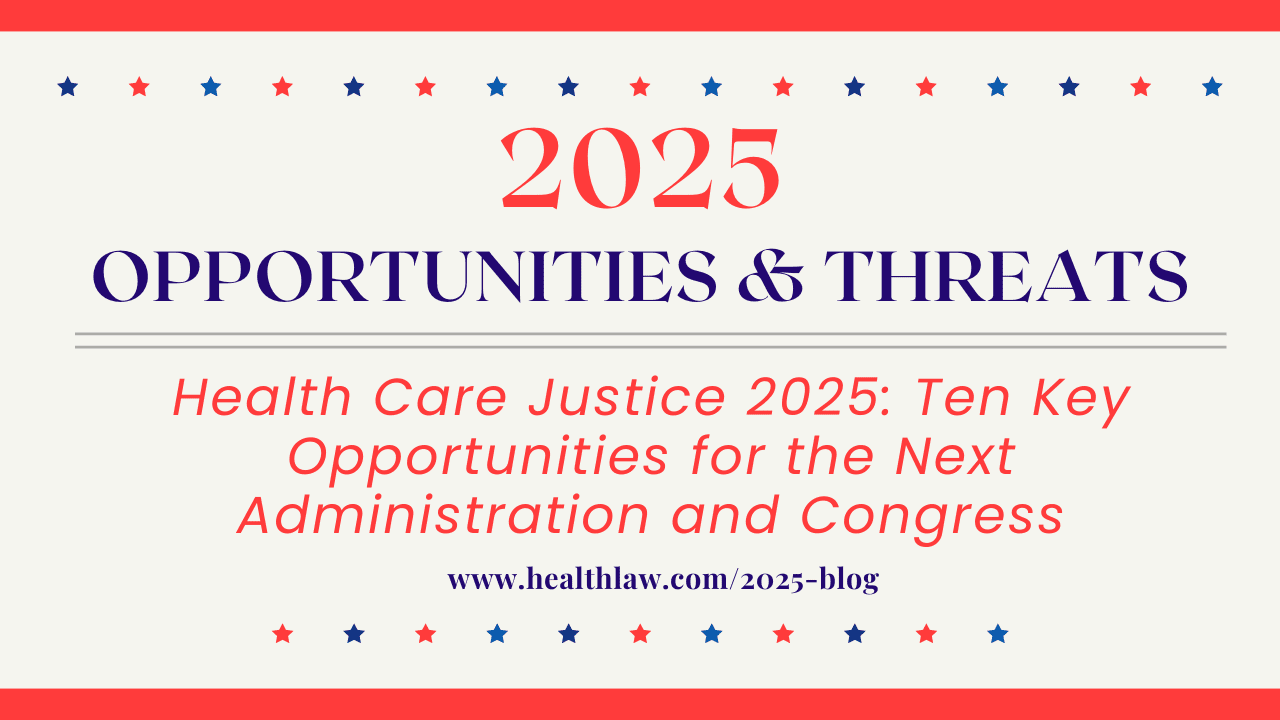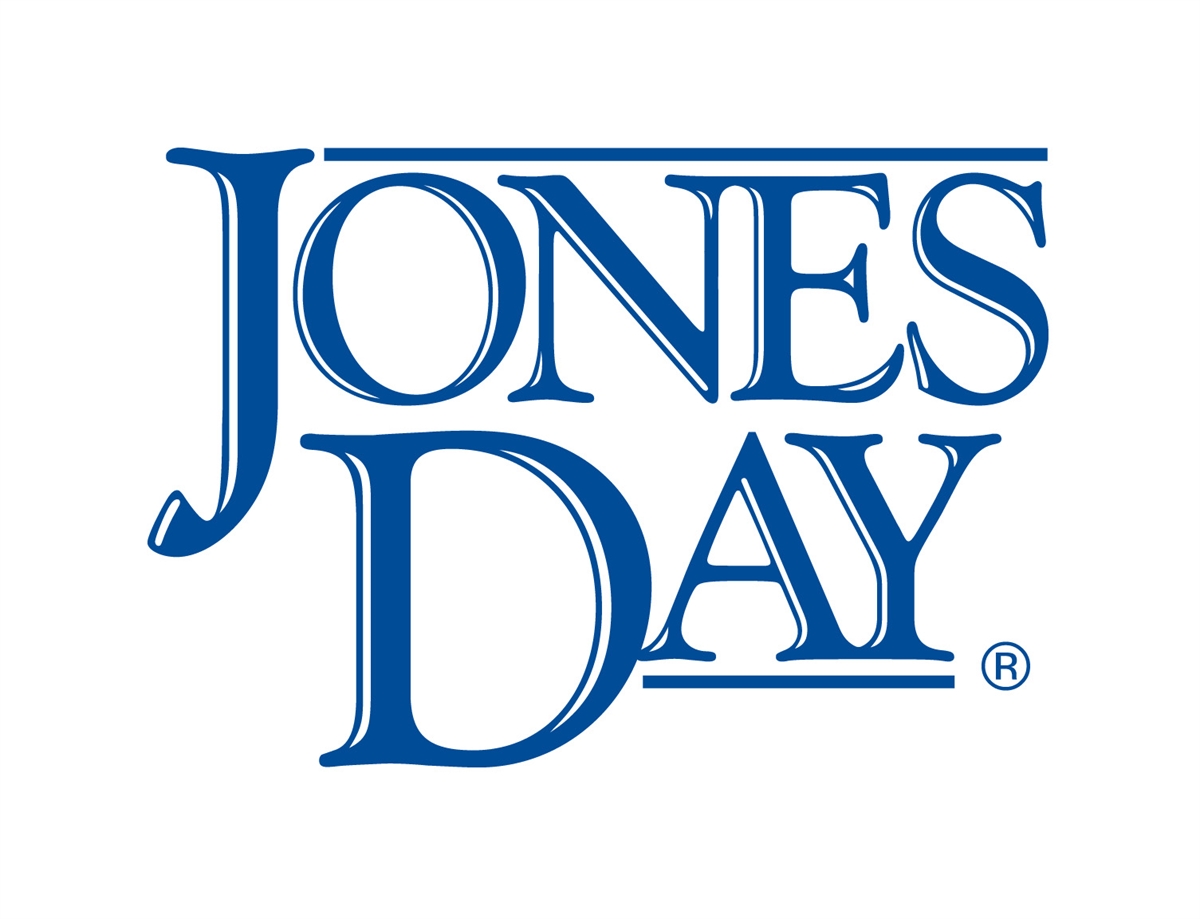Health Care Justice in 2025: Ten key opportunities for the next administration and Congress
The upcoming election in November will have a significant effect on health care across the country. Candidates at the federal and states levels may propose policy proposals that could have a profound impact on health law and policies in 2025. Follow along with NHeLP through Election Day as we explore opportunities and threats to health care in the United States. Follow along with NHeLP as we explore the opportunities and threats to healthcare in the United States. In the last four-years, the Administration and 118th Congress took critical steps to improve the access to health care in the U.S. for millions of people, driving our nation’s uninsured rates to a
historic low. While we can’t predict what will happen during the November elections, it is clear that the next Administration and Congress have many critical and possibly fleeting opportunities to build upon this momentum towards health care justice
— and NHeLP will be ready to seize these and fight. In this blog, I present 10 key federal legal and policies opportunities to advance health justice.I. Administrative OpportunitiesBuilding upon progress from the last four years, the next Administration should prioritize the following administrative opportunities.1). Enforcing federal Medicaid requirements This Spring, the U.S. Centers for Medicare & Medicaid Services, or CMS, managed to finalize a total of three rules that were designed to improve quality, transparency, oversight, and oversight for Medicaid managed care programs and fee-for service programs. They also finalized a final regulation
that was designed to simplify the Medicaid application and renewal process, as well as implementing a
final0100 As part of its public education efforts, CMS also developed crucial Know Your Rights resources for the public on
EMTALA
among other federal protections. The next Administration must build on these wins by implementing, enforcing, and continuing to educate the public on federal protections for Medicaid and CHIP beneficiaries writ large, such as enrollment and eligibility, access to services, and consumer protections.2). Implementing and enforcing 2024 Ensuring Access to Medicaid Services final ruleThis Spring CMS published the Medicaid Access Final Rule. The rule could, among other reforms, strengthen access for critical home- and community-based services
(HCBS). Medicaid HCBS allows beneficiaries with disabilities or complex health needs to remain in their own homes and communities. We are facing a national shortage of direct care workers such as home health aides and personal care aides. The Medicaid Access rule
addresses this crisis by creating a mechanism that addresses historically inadequate rates, and requiring a fair (80% share) of the rate paid to certain types of HCBS to go right to wages of direct care workers. This workforce is largely made up of immigrants and people who are of color. In conjunction with its HCBS reforms and Medicaid Advisory Committees, the Medicaid Access final regulation expands the scope and mandates that states establish Beneficiary Advisory Councils comprised of beneficiaries, caregivers, and/or their families. It also requires states to demonstrate access sufficiency in submitting a state-plan amendment (SPA) that includes a fee-for service rate reduction or restructuring when circumstances could result in diminished accessibility for all services. The next Administration must ensure that these reforms are implemented robustly. (3). Enforcing the health rights of children in Medicaid Millions and millions of children and youth are eligible for Medicaid’s Early, Periodic Screening, Diagnosis, and Treatment (EPSDT).. Young people from low-income households are more likely than others to suffer from poor health outcomes due to structural barriers in health care, nutritious food that is culturally appropriate, comprehensive sexuality education and stable and healthy housing. EPSDT aims to reduce the impact of these barriers by providing access to early diagnosis and treatment. However, states have
longfailed to meet their obligations under Medicaid’s EPSDT requirements. CMS should continue to prioritise enforcement of EPSDT through robust oversight of the state programs.4). Enforcing Medicaid’s abortion, gender-affirming care, and family planning coverage requirementsOver the last several years, state and federal attacks on access to abortion, gender-affirming care, and contraception
—
all safe, effective, and essential services — have escalated. This shift has intensified state violations of federal Medicaid requirements for sexual, reproductive and gender-affirming health care. For example, some states violate federal requirements and fail to cover abortions within the Hyde Amendment’s exceptions and gender-affirming care . Some violate
the
federal right of a Medicaid enrollee to access family planning services and supplies from the provider of their choice. The next Administration should prioritize robust enforcement of and public education regarding these neglected federal Medicaid protections.5). Implementing and enforcing federal anti-discrimination lawsThis spring, the U.S. Department of Health and Human Services’ Office for Civil Rights (OCR), finalized a rulethat clarifies protections provided under SS 1557 of Affordable Care Act (ACA), prohibiting health care discrimination based on race, color, nationality, sex or disability, age or any combination of these factors. NHeLP helped craft SS 1557 in our work on the Affordable Care Act and has continued advocating for its robust enforcement and implementation. The new final rule clarified nondiscrimination rights regarding language access and protections for people of color; sex, including sex stereotypes, gender identity, sexual orientation, sex characteristics (including intersex traits), and pregnancy or related conditions; and access and services for disabled people. OCR published the first new rule to update regulations on SS504 of the Rehabilitation Act which prohibits discrimination against people with disabilities by recipients of HHS funds, since 1977. The updates were robust, vital, and long-overdue
. In the last four-year period, OCR has prioritised civil rights enforcement, and reached
key agreements in order to address disability discrimination, sex discrimination, and racial bias by covered entities.The new administration should build on these achievements by prioritizing enforcement (including public education and outreach), and implementation of its 2024 nondiscrimination rule. OCR, for example, should provide guidance to providers and insurers on prohibited disability discrimination within the context of sexual and reproductive health services, building on the examples provided by the agency in the preamble of the final rule on SS504.II. Congressional Opportunities To achieve health care justice in the U.S., key federal health law changes are needed, including closing long-standing coverage gaps, expanding accessibility to essential services, as well as adequately funding programs. NHeLP, among other reforms, will continue to push in the future for the following policy changes. 6). Close Medicaid expansion coverage gaps equitablyOver these past four years, both the Administration and Congress took important incremental steps to close Medicaid coverage gaps. They implemented a SPA option that extends pregnancy Medicaid eligibility for a full 12 months. This will be implemented by August 1, 2024 in all 46 states and D.C. But policymakers in 10 state still refuse Medicaid expansion – a discriminatory choice rooted in structural racism. Medicaid expansion coverage gaps result from the estimated
1.5 millions adults
who have incomes that are too high for traditional Medicaid eligibility, but below the poverty level. They are therefore ineligible to receive subsidies on the Marketplaces. If all states implemented the expansion, approximately
2.9 uninsured adult
could become eligible for Medicaid. This would include the coverage gap as well as an additional
1.4 millions uninsured adults who have low incomes between 100 and 138% FPL. If these states will not expand Medicaid, Congress must act to secure equitable health insurance coverage for the people in this coverage gap. Any federal solution to the coverage gap must guarantee access Medicaid’s robust protections, as intended by the ACA. It could create a separate, unequal system of coverage for millions Black, Latine and other people of colour in the South and reinforce structural racism in U.S. healthcare policy. In our 2021 framework “Closing the Medicaid Coverage Gap: Principles for Preventing a Separate and Unequal Result,” NHeLP offers federal policymakers and advocates key considerations to ensure that any federal coverage program for people in this gap incorporates Medicaid’s vital protections and safeguards the Medicaid entitlement nationwide.7). Make Medicaid HCBS mandatoryMedicaid is one of the only forms of health coverage that regularly covers HCBS, such as personal care, supported employment, and peer support services. Unfortunately, access to HCBS varies depending on geography. HCBS is an optional benefit. States that choose to cover HCBS may limit the services they cover or “cap” their number of enrollees. This can lead to years or even decade long waiting lists for care. Some people die waiting for access. Due to these and other obstacles, it is often easier for people with disabilities and complex health needs who are in need of institutional care to enter than stay in their community. The HCBS Act addresses this injustice through important reforms. The Act would replace the current waivers and optional HCBS services by new mandatory services such as caregiver support and homemaking assistance. The Act would save lives by making HCBS mandatory. Fund the HHS Office for Civil Rights
HHS regulates and enforcing 55 federal laws including privacy, civil rights and other federal laws such as SS1557, SS504, and the Health Insurance Portability and Accountability Act. OCR is responsible for outreach, education, implementation and enforcement of these laws in health care settings. These responsibilities become even more important as discriminatory barriers to sexual and reproductive health care, and gender affirming care, continue to increase. Yet Congress has underfunded OCR for too long. NHeLP co-chairs the Leadership Conference for Civil Rights Health Care Task Force which leads the national discussion on the need for significantly higher funding levels in order to ensure adequate and timely completion. We urge the next Congress to at least
double OCR’s current appropriations
to ensure that HHS can fulfill its vital charge to safeguard civil rights and privacy rights in health care.9). Address racial and ethno-ethnic inequities within our health care systemToday Black, Indigenous, Latines, Asian Americans, Pacific Islanders, and other people of color face higher structural barriers in accessing health insurance, culturally and language-congruent care and health related social needs. The Health Equity and Accountability (HEAA) Act represents a crucial chance for comprehensively combating the vast racial inequalities that mark the U.S. as well as the intersections of xenophobia and sexism as well as ableism and ageism. HEAA builds on the ACA’s successes by implementing groundbreaking reforms, such as closing Medicaid coverage gaps for immigrants and post-pregnancy; establishing Medicaid payment models and other payment and service delivery innovation that center racial equity; and strengthening data gathering and access to culturally appropriate and linguistically appropriate healthcare. For example, HEAA includes the text of the
Health Equity and Access Under Law for Immigrant Families Act, which addresses
the xenophobic exclusion of many immigrants from Medicaid, CHIP, Marketplace, and Medicare coverage.
Since the Congressional Tri-Caucus
first introduced HEAA in 2003, over 300 organizations have contributed to its development as part of the Community Working Group. NHeLP has the honor of serving on the Community Working Group, and as chair of the Title V Committee. This committee focuses on promoting racial equity in sexual and reproductive health, and children’s healthcare. We urge Congress to pass HEAA.10). Create a federal right to Medicaid abortion coverage without restrictionsFor forty-five years, the Hyde Amendment has withheld federal funds from states to cover abortion services in nearly all circumstances. It has created unconscionable barriers for low-income people and those who are underserved to receive health care or coverage through Medicaid and other HHS funded programs. It has pushed abortion access out of reach for millions, disproportionately harming people of color,
people with disabilities
, LGBTQI+ people, young people, and their families. The Supreme Court’s decision to end the constitutional right to abortion has exacerbated these barriers for Medicaid beneficiaries. NHeLP is of the opinion that the U.S. must ensure equal abortion coverage for all regardless of a person’s race, ethnicity, sexual orientation, gender identity, age, language, disability, immigration or economic status. We urge Congress to pass the Equal access to abortion coverage in health insurance (EACH) Act. The EACH Act would
end the Hyde Amendment and restore or newly mandate abortion coverage in Medicaid, CHIP, and other health programs and plans.ConclusionNo matter what happens in November, NHeLP’s deep bench of leading health care attorneys, policy architects, and communications strategists are prepared to continue to fight for social justice in our health care system. We will draw from our extensive network of advocacy strategies, strengths and relationships with federal and state partners to create a future in which everyone in the U.S. has access to affordable, high-quality and non-discriminatory health care.






